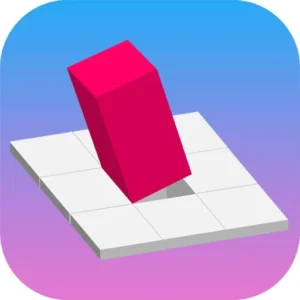Quick reaction times can be the difference between victory and defeat in competitive gaming. Whether you’re dodging an enemy attack or landing a critical shot, faster reflexes give you an edge. The guide will provide actionable tips and examples to help improve your reaction times in an easy-to-understand format.
Step 1: Understand the Importance of Reaction Times
Reaction time refers to how quickly you respond to a stimulus, such as seeing an enemy or hearing an in-game alert. In gaming, it involves perceiving, processing, and acting on information as fast as possible.
Why Reaction Times Matter
- Competitive Edge: Faster responses help you outplay opponents.
- Better Accuracy: Quick decisions reduce errors in critical moments.
- Improved Game Performance: Timely actions lead to more successful outcomes.
Example
In games like Valorant or Fortnite, a faster reaction can mean escaping a sniper shot or taking out an opponent before they strike.
Step 2: Optimize Your Gaming Setup
Your equipment and settings can significantly impact your reaction times.
Monitor Settings
- Refresh Rate: Use a monitor with at least 120Hz for smoother visuals.
- Response Time: Choose monitors with a low response time (1 ms is ideal).
Mouse and Keyboard
- Mouse DPI: Adjust to a sensitivity that’s fast but controllable.
- Key Bindings: Customize keybindings for faster access to crucial controls.
Example
A low DPI setting of 800-1600 is common for first-person shooters, allowing better precision during fast movements.
Tips
- Use a lightweight gaming mouse for easier maneuverability.
- Test different keyboard setups to find what feels most natural.
Step 3: Practice with Purpose
Regular practice is essential for improving reaction times. Focused and structured training yields better results than random play.
Training Methods
- Reaction Drills: Use tools like Aim Lab or Kovaak’s to practice targeting and reflexes.
- Warm-Up Routines: Spend 10-15 minutes warming up before playing competitive matches.
Game-Specific Practice
- FPS Games: Practice flick shots and tracking targets.
- MOBA Games: Work on casting abilities and map awareness quickly.
Example
In Counter-Strike: Global Offensive, players often practice in aim maps to refine their shooting accuracy and speed.
Tips
- Set specific goals for each practice session, like improving headshot accuracy.
- Gradually increase the difficulty of pushing your limits.
Step 4: Focus on Hand-Eye Coordination
Improving coordination between your eyes and hands helps you react faster to in-game events.
Exercises to Improve Coordination
- Ball Toss: Toss and catch a ball to improve reflexes.
- Reaction Apps: Use mobile apps designed for reflex training.
Example
A simple exercise like tapping a light-up button on an app can train your brain to react faster.
Tips
- Spend 5-10 minutes daily on coordination exercises.
- Incorporate physical activities like table tennis for real-world reflex training.
Step 5: Maintain Mental Focus
Distractions can slow your reaction times. Staying focused ensures you respond faster to game events.
Techniques for Mental Focus
- Mindfulness: Practice staying present and avoiding overthinking during gameplay.
- Breaks: Take short breaks to prevent fatigue.
Example
Pro players often use short meditation sessions to calm their minds before tournaments.
Tips
- Limit external distractions like phone notifications.
- Use noise-canceling headsets to block out background noise.
Step 6: Build Muscle Memory
Muscle memory allows your body to perform actions automatically, reducing reaction times.
How to Build Muscle Memory
- Repetition: Repeat key actions until they become second nature.
- Consistent Settings: Avoid frequently changing sensitivity or key bindings.
Example
In League of Legends, using the same keybindings for abilities helps players respond faster during intense fights.
Tips
- Focus on repetitive actions like reloading or switching weapons.
- Use training modes in games to practice specific scenarios.
Step 7: Enhance Physical Health
Your physical condition affects your gaming performance, including reaction times.
Sleep and Rest
- Tip: Get 7-9 hours of sleep to improve alertness.
- Example: Sleep deprivation can slow reaction times by up to 20%.
Diet and Hydration
- Tip: Eat foods rich in omega-3s and antioxidants.
- Example: Nuts and berries boost brain health.
Exercise
- Tip: Regular aerobic exercises improve blood flow to the brain.
- Example: Jogging or cycling for 20 minutes daily can sharpen focus.
Step 8: Use Gaming Tools and Software
Technology can help you refine and track your reaction times.
Reaction Time Tests
- Tools: Use online reaction time tests to monitor your progress.
- Example: Humanbenchmark.com offers simple tests to measure reflexes.
Software for Improvement
- Aim Trainers: Programs like Aim Lab simulate gaming scenarios for reflex training.
- Settings Adjustments: Optimize your game’s graphical settings for smoother performance.
Tips
- Regularly track your reaction times to measure improvement.
- Customize training programs to focus on weaknesses.
Expert Insights
Gaming coach Ryan Fletcher states, “Improving reaction times isn’t just about practice; it’s about smart practice combined with good habits like proper sleep and focus.”
Final Checklist for Faster Reaction Times
- Optimize your gaming setup for better performance.
- Practice regularly with purpose and clear goals.
- Train your hand-eye coordination with targeted exercises.
- Stay mentally focused and minimize distractions.
- Maintain physical health through sleep, diet, and exercise.
- Use tools and software to track and improve your reflexes.
By following these steps, you’ll notice significant improvements in your reaction times, giving you an advantage in competitive gaming.





